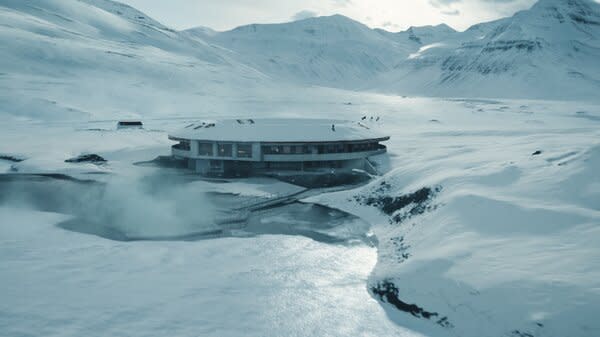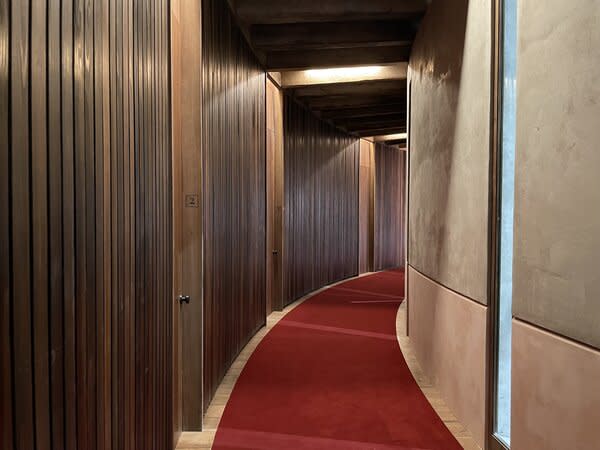I Can’t Stop Thinking About the Dystopian Hotel in "A Murder at the End of the World"
The fictional bunker perfectly embodies misanthropic luxury, evoking our current billionaires and their lairs almost too closely.

Earlier this month, the internet paused to gawk at Mark Zuckerburg’s newest creation—not updates to his legless virtual fantasy world, but instead, a more critical look into his $100 million residential ‘compound.’ In particular, Wired took a deep-dive into the project, and found the residence will include a 5,000-square foot underground lair equipped with "energy and food supplies," making us all suspect that Zuck is readying himself for the end of the world. Perhaps it’s the hubris of a man whose empire was built on energy-gobbling server farms, or that he spent nearly a decade buying up indigenous lands in a state still reeling from an environmental disaster—the abject horror of the whole endeavor gives me the shivers. But then there’s the part of me that wants to know what this place will look like; its floor plan, how it’ll be furnished, the tactics deployed that will make a subterranean living space seem inhabitable.
While this news broke, I was finishing up A Murder at the End of the World, a new Hulu series by creators Brit Marling and Zal Batmanglij. The 7-episode arc follows Darby Hartt (Emma Corrin), an amateur Gen Z murder sleuth and talented hacker who is invited to attend a mysterious summit held by billionaire Andy Ronson (played by Clive Owen, who brilliantly likens an Elon Musk). Andy brings her and eight other innovators in tech, science, and the arts to his private residence: a hotel, located in Iceland’s remote Fljot Valley. While the story contains plentiful murders and a classic ‘whodunit’ intrigue, the hotel itself resonates, not only as a plot-driving force but also as a perfect encapsulation of how real-world billionaires are meeting the uncertain future: with a hard-on for global collapse that manifests as residential design.
At face, the hotel—which, according to the Los Angeles Times, was imagined by Marling and Batmanglij, in collaboration with production designer Alex DiGerlando—is a simple, two-story structure unique in its circular, spaceship-like shape and abundant glazing. The two floors of residences are laid out across the above-ground circle, with only a handful of rooms on each floor. Each includes a sliding glass walkout into the frigid terrain, a place that Andy describes as "the last untouched piece of wilderness."
The rooms, like much of the hotel’s interior, feature dark wood, dim, ambient lighting, and unfussy furnishings. The sofa included in Darby’s room is reminiscent of one any college student might have; the few moments of luxury are apparent only when viewers get a glimpse of a Louise Bourgeois painting in the background, or in the hotel’s enviable indoor/outdoor heated swimming pool. Strikingly, for a space envisioned by a leader in tech, there are very few screens anywhere; much of the technology is concealed—like an automatic LIDAR scanner that monitors all visitors’ movements through the hotel—except for RAY, Andy’s artificial intelligence invention that is part-assistant, part-therapist, whose omnipresence can be helpful, but wanes between benign and malevolent.
See the full story on Dwell.com: I Can’t Stop Thinking About the Dystopian Hotel in "A Murder at the End of the World"
Related stories:




